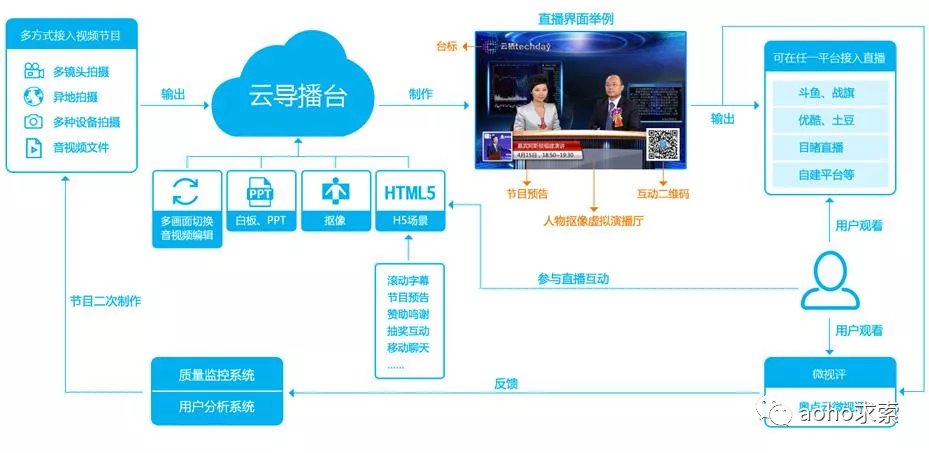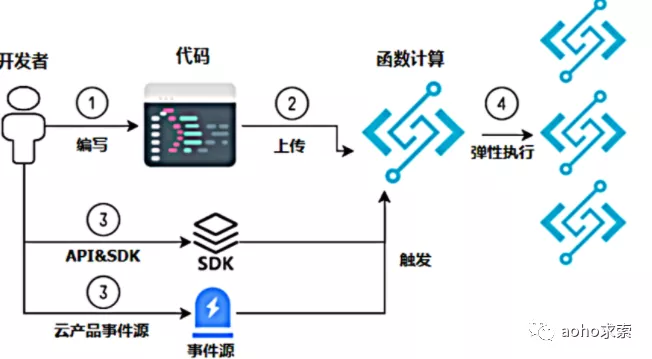Serverless WordPress 系列建站教程(一)
一种基于 Serverless 架构的 WordPress 全新部署方式
Serverless WordPress 系列建站教程(二)
教你如何申请并绑定自定义域名
Serverless WordPress 系列建站教程(三)
使用 Serverless 建站是如何计费的?
一种基于 Serverless 架构的 WordPress 全新部署方式
教你如何申请并绑定自定义域名
使用 Serverless 建站是如何计费的?
作者 | aoho 来源 | Serverless 公众号
Serverless 架构是不是就不要服务器了?回答这个问题,我们需要了解下 Serverless 是什么。
Serverless 架构近几年频繁出现在一些技术架构大会的演讲标题中,很多人对于 Serverless,只是从字面意义上理解——无服务器架构,但是它真正的含义是开发者再也不用过多考虑服务器的问题,当然,这并不代表完全去除服务器,而是我们依靠第三方资源服务器后端,从 2014 年开始,经过这么多年的发展,各大云服务商基本都提供了 Serverless 服务。比如使用 Amazon Web Services(AWS) Lambda 计算服务来执行代码。

国内 Serverless 服务的发展相对 AWS 要晚一点,目前也都有对 Serverless 的支持。比较著名的云服务商有阿里云、腾讯云。它们提供的服务也大同小异:函数计算、对象存储、API 网关等,非常容易上手。
看看过去几十年间,云计算领域的发展演进历程。总的来说,云计算的发展分为三个阶段:虚拟化的出现、虚拟化在云计算中的应用以及容器化的出现。云计算的高速发展,则集中在近十几年。

总结来说有如下的里程碑事件:
从裸金属机器的部署应用,到 Openstack 架构和虚拟机的划分,再到容器化部署,这其中典型的就是近些年 Docker 和 Kubernetes 的流行,进一步发展为使用一个微服务或微功能来响应一个客户端的请求 ,这种方式是云计算发展的自然过程。
这个发展历程也是一场 IT 架构的演进,期间经历了一系列代际的技术变革,把资源切分得更细,让运行效率更高,让硬件软件维护更简单。IT 架构的演进主要有以下几个特点:
Serverless 架构分为 Backend as a Service(BaaS) 和 Functions as a Service(FaaS) 两种技术,Serverless 是由开发者实现的服务端逻辑运行在无状态的计算容器中,它是由事件触发、完全被第三方管理的。
Baas 的英文翻译成中文的含义:后端即服务,它的应用架构由大量第三方云服务器和 API 组成,使应用中关于服务器的逻辑和状态都由服务提供方来管理。比如我们的典型的单页应用 SPA 和移动 APP 富客户端应用,前后端交互主要是以 RestAPI 调用为主。只需要调用服务提供方的 API 即可完成相应的功能,比如常见的身份验证、云端数据 /文件存储、消息推送、应用数据分析等。
FaaS 可以被叫做:函数即服务。开发者可以直接将服务业务逻辑代码部署,运行在第三方提供的无状态计算容器中,开发者只需要编写业务代码即可,无需关注服务器,并且代码的执行是由事件触发的。其中 AWS Lambda 是目前最佳的 FaaS 实现之一。
Serverless 的应用架构是将 BaaS 和 FaaS 组合在一起的应用,用户只需要关注应用的业务逻辑代码,编写函数为粒度将其运行在 FaaS 平台上,并且和 BaaS 第三方服务整合在一起,最后就搭建了一个完整的系统。整个系统过程中完全无需关注服务器。
总得来说,Serverless 架构主要有以下特点:
由于 Serverless 应用与服务器的解耦,购买的是云服务商的资源,使得 Serverless 架构降低了运维的压力,也无需进行服务器硬件等预估和购买。
Serverless 架构使得开发人员更加专注于业务服务的实现,中间件和硬件服务器资源都托管给了云服务商。这同时降低了开发成本,按需扩展和计费,无需考虑基础设施。
Serverless 架构给前端也带来了便利,大前端深入到业务端的成本降低,开发者只需要关注业务逻辑,前端工程师轻松转为全栈工程师。
应用场景与 Serverless 架构的特点密切相关,根据 Serverless 的这些通用特点,我们归纳出下面几种典型使用场景:弹性伸缩、大数据分析、事件触发等。
由于云函数事件驱动及单事件处理的特性,云函数通过自动的伸缩来支持业务的高并发。针对业务的实际事件或请求数,云函数自动弹性合适的处理实例来承载实际业务量。在没有事件或请求时,无运行实例,不占用资源。如视频直播服务,直播观众不固定,需要考虑适度的并发和弹性。直播不可能 24 小时在线,有较为明显的业务访问高峰期和低谷期。直播是事件或者公众点爆的场景,更新速度较快,版本迭代较快,需要快速完成对新热点的技术升级。

数据统计本身只需要很少的计算量,离线计算生成图表。在空闲的时候对数据进行处理,或者不需要考虑任何延时的情况下。

事件触发即云函数由事件驱动,事件的定义可以是指定的 http 请求,或者数据库的 binlog 日志、消息推送等。通过 Serverless 架构,在控制台上配置事件源通知,编写业务代码。业务逻辑添加到到函数计算里,业务高峰期函数计算会动态伸缩,这个过程不需要管理软硬件环境。常见的场景如视频、OSS 图片,当上传之后,通过进行后续的过滤、转换和分析,触发一系列的后续处理,如内容不合法、容量告警等。
回到我们文章的开头,Serverless 架构不是不要服务器了,而是依托第三方云服务平台,服务端逻辑运行在无状态的计算容器中,其业务层面的状态则被开发者使用的数据库和存储资源所记录。
Serverless 无服务器架构有其适合应用的场景,但是也存在局限性。总得来说,Serverless 架构还不够成熟,很多地方尚不完善。Serverless 依赖云服务商提供的基础设施,目前来说云服务商还做不到真正的平台高可用。Serverless 资源虽然便宜,但是构建一个生产环境的应用系统却比较复杂。
云计算还在不断发展,基础设施服务日趋完善,开发者将会更加专注于业务逻辑的实现。云计算将平台、中间件、运维部署的责任进行了转移,同时也降低了中小企业上云的成本。让我们一起期待 Serverless 架构的未来。
参考:
Technologies and operational systems in businesses tend to evolve every 6 months. Certainly, matching up with the market trend every time there’s a turn is a humongous task. Imagine how much cost and effort would be saved if they were auto-scalable.
While there are many ways to enhance the scalability of a system, this article will talk about AWS serverless technology that is known to take businesses to a new level of productivity and scalability. The next big question that arises here is why is it called serverless? There are servers in the serverless but the term is used because it describes the customer’s experience of the servers, which is invisible and is not present physically in front of the customers. The customer doesn’t have to manage them or interact with them in any way.
We can dive deeper only after we have understood the true meaning of serverless computing.
It is a cloud computing execution model that provisions computing resources on demand. It enables the offloading of all common infrastructure management tasks such as patching, provisioning, scheduling, and scaling to cloud providers and tools, allowing engineers to focus on the customization required for applications required for the client.
Features of serverless computing
It does not require monitoring and management, which helps developers more time to optimize codes and find out innovative ideas to add features and functionalities to the application.
Serverless computing runs codes on-demand only, typically in a stateless container only when there’s a request. The scaling too is transparent with the number of requests being served.
Serverless computing charges only for what’s being used and not for idle capacity.
The serverless market is estimated to grow around $20B USD by 2025. The striking figures are owed to the innumerable disadvantages of serverless computing as compared to traditional cloud computing, server-centric infrastructure. Below mentioned are some of the important benefits offered by top serverless cloud computing service providers.
No worries about server maintenance
Managed by the vendors completely, this can reduce the investment necessary in DevOps. This not just lowers the expenses but also frees up developers to create and expand the applications without being held behind by server capacity.
Since the application is not hosted on an original server, its code can be run from anywhere. Depending on the servers, it can thus be used to run applications on servers that are close to the end-users. This reduces latency because requests from the user no longer have to travel all the way to the origin server.
Applications built on serverless architecture scale up automatically during spike season and scale down during the lean period. Additionally, if the function needs to be run in multiple instances, the vendor’s server will start, run and end when the requirement is over. This is done often using containers. A serverless application, thus, can handle a high number of requests as well as single requests.
There is no need for the developer to upload codes or do any backend configuration in order to release a working application. Uploading bits of code all at a time or one function at a time can help release an application quickly. This can be done because the application is not a single monolithic stack but rather a collection of functions provisioned by the vendor. This also helps in patching, fixing, updating new features to an application.
It is not the responsibility of the developers to ensure the fault tolerance of the serverless architecture. The cloud provider assigns the IT infrastructure that will be automatically allocated to account for any kind of failure.
Users need to pay only for the running code and there are no upfront costs involved while deploying the serverless cloud infrastructure to build an application.
Every technology has its own set of drawbacks which needs expert consultation and technology expertise. Some of the disadvantages of using serverless applications are as follows:
It is difficult to replicate the serverless environment in order to check for bugs and see how the code will perform once deployed. Debugging is extremely difficult because developers are not aware of the backend process. Moreover, applications here are broken up into separate, smaller functions.
Solution: Businesses planning to use serverless applications should look for serverless cloud infrastructure providers of vendors who are experts in sandbox technology who can help in reducing the difficulties in testing and debugging.
When applications are run on serverless platforms, the developers do not have access to the security systems or might not be able to supervise the security systems, which could be a big issue for platforms handling crucial and secret data. Since companies do not have their own assigned servers, serverless providers will often be running code from several of their customers. This scenario is also known as multitenancy. Interestingly, if not performed properly, this can lead to data exposure.
Solutions: Software service providers that sandbox functions avoid the impacts of multi-tenancy. They also have a powerful infrastructure that avoids data leaks.
Most of the applications do not fit the bill because clients would want a long-standing application, which would charge more on serverless architecture than on traditional ones. This is because providers charge for only the time when the code is running.
Solution: IT consultancy can help businesses understand whether their business requirements will be fulfilled by serverless architectures or not. It is advisable to get IT consultants cum solution providers to help businesses get the right guidance. This will not just save money but also time for businesses.
Since the servers are not constantly used, the code might require ‘boot up’ when it is used. This startup might affect the performance of the application. But if the code is used regularly, the serverless provider is responsible to keep it ready for whenever it needs to be activated. A request for this ready-to-go code is called a “warm start”.
Solution: Experienced serverless cloud service providers will be able to avoid the cold start by using the Chrome V8 engine, which can restart the application in less than 5 milliseconds. The experts having good exposure to such a setup can easily manage the performance lag without the customers even noticing.
Serverless cloud applications are often branded as type-set, unable to sync in with another vendor in time of transition. This is because the architecture and the workflow vary from one vendor to another.
Solution: Expert service providers can help you migrate with applications written with JavaScripts, written against the widely used service workers API. This helps in fast and seamless integrations without errors and failures.
Moving to serverless? Get the best help you need from trained developers and expert cloud consultants. Learn all about data pipeline architecture and sync serverless deployments while speeding migration times and reducing costs.